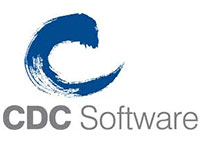
Contact center operations are constantly under scrutiny. They’re complex, they’re expensive to run, and employee retention and training can be problematic, to say the least.
Contact center managers have a never-ending desire to streamline operations to keep spending in check. If they’re not focusing on finding new outsourcing options for cutting front-end costs, then they’re leveraging technologies to trim fat on the back end.
Like just about every other subset under the CRM umbrella, the contact center sector has experienced a slowdown in the past few months. However, the industry continues sustain some growth, according to Datamonitor, with the U.S., Canada, Europe, Australia and New Zealand recently tracking at under 5 percent (based on number of seats). In locations where offshoring has been gaining momentum, growth numbers can reach as high as 10 percent.
“I’d say that right now, the contact center industry is in a state of transformation,” Peter Ryan, Datamonitor’s lead analyst for contact center outsourcing, told CRM Buyer. “The past two years have been very good to companies involved in moving contact center work offshore. Emerging [offshore] locations such as South Africa, Egypt, Kenya and Malaysia are proving to be very successful.”
As for software and maintenance revenues, IDC reported that overall, the worldwide CRM market for 2009 is at US$16.6 billion, with the contact center space accounting for $5.8 billion (showing 2.5 percent growth in 2009). The category is projected to experience 5 percent to 6 percent growth for the next several years.
Changing the Landscape
There are two major trends developing in the near term, according to Ryan. “With the recession, the contact center industry [in North America] is now moving to a recovery, and there is a greater focus on moving more work onshore and developing more innovative business models.”
Customer segmentation is becoming a main driver of contact center strategies, noted Ajay Kapoor, managing director of strategic communications consulting for Avaya.
“The cost structure of contact centers of the past was to provide the same level of support to every customer,” he told CRM Buyer. “Today they truly need to find ways to segment customers into which generate more revenues, which incur the highest costs, and which ones are candidates for up-selling or cross-selling.”
Consolidation has also accelerated in the last 18 to 24 months. “I don’t mean brick-and-mortar consolidation,” said Kapoor. “Rather, if you are using an outsourced model, it’s about sharing a centralized architecture to enable distribution of calls to virtual or in-office workers. Really, it’s about routing calls in a much more intelligent way through transport mechanisms of the future.”
Home Values
The U.S. is seeing a lot more effort on the part of the contact center community to find secondary or third-tier cities to do the work than ever before, Ryan noted. “The challenge is, however, how do you onshore your contact center work, while at the same time, keep your costs down? The U.S., Canada and Australia are the most expensive [contact center] places in the world right now.”
In order to bring services closer to home at an affordable rate, more contact center managers are now exploring the idea of adopting home agent options, or automating more processes through integrated voice response (IVR) or unified communications (UC) investments.
A survey of contact center managers revealed that 44 percent in North America were considering home agents, Ryan reported, while 42 percent were considering speech self-services as alternatives to outsourcing.
“If you listen to the hype around home agents, I would expect the numbers to be a bit higher,” he added. “Businesses are looking desperately for cost savings, but they’re not showing the willingness we would expect to look at new business models or technology. But there is a lot of tire kicking around it.”
A Unified Front
There is still room for the industry to grow through adoption of newer technologies, said Michael Fauscette, group VP of software business solutions for IDC.
“Contact centers will now be driven by initiatives around unified communications. Microsoft and Cisco have new products that they’re getting into the market. Then there’s Avaya, Convergys and ClickFox, on the software side,” he told CRM Buyer.
“We’re now seeing a lot of UC concepts that are making a lot of sense for customer care,” observed Ross Daniels, director of UC solutions marketing for Cisco.
“We see UC as tying in two ways — presence and instant messaging for agents, and more automation of interactions such as conferencing in order to take the agent out of the connection process,” Daniels told CRM Buyer. “But everything we’re seeing is still in the very early days on the contact center side.”
The concept of presence is key to contact center efficiency, said Kapoor.
“The ability to communicate to agents and enable contact with experts has a lot of value that ties into segmentation,” he explained. “That is being deployed more broadly than other aspects of UC today in contact centers. There is also much more interest in IVR and voice portals than a year ago, because it saves back-end costs and allows companies to move to more self-service options.”
Technology extras that are gaining traction in the IVR space include tools for advanced analytics. “For example,” said Kapoor, “there is technology that allows you to get a visual representation of your IVR activities to see what works, what doesn’t, and where breakdowns are occurring. A few changes and your hit rate can go through the roof — the economics can change that quickly. There is tremendous growth potential for analytics.”
The good news is that ROI for contact center technologies is “almost always very positive,” Cisco’s Daniels noted. “The drivers [of adoption] are always going to have a cost aspect. The economics of contact center technologies are well proven, and they work.”
The Social Factor
Another development that is expected to gain momentum quickly on the contact center front is social networking.
“Early trending is showing that contact centers are starting to think about how they can incorporate social networking into the channel. It’s very early days, but something they’re keeping an eye on,” Daniels said.
“Social media is absolutely the hot button for contact center operations,” remarked Kapoor. “Comcast, for example, is famous for using chat, as well as Twitter and other social media, to communicate with clients.”
Whatever the strategies, a change of attitude in the industry is a must, said Kapoor.
“Economics have changed like night and day in the last 18 months. Those companies that were in client traction mode are now focused on retention. Right now, I truly believe the cost of inaction is greater than the cost of action,” he warned, “and the time is ripe to take advantage of new techniques or make better use of the assets you have.”























































